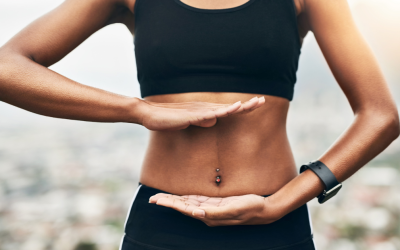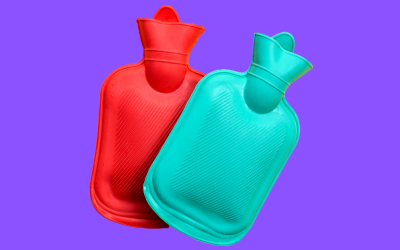Sports massage is a powerful tool that plays a vital role in helping athletes recover from intense physical activity. Its benefits extend far beyond relaxation and pampering. The science behind sports massage reveals many advantages that aid recovery.
Whether you are a professional athlete or a fitness enthusiast, understanding how sports massage can enhance your recovery is essential for optimizing your performance. Let’s delve into the details and explore the incredible ways sports massage can aid your recovery journey.
The Science of Massage in Enhancing Recovery
Before we delve into the specific benefits of sports massage, let’s take a moment to understand its science. Massage therapy stimulates the body’s natural healing processes by promoting blood circulation and releasing muscle tension. It helps reduce muscle soreness, alleviate inflammation, and improve joint flexibility. Not only does massage physically address any existing issues, but it also positively affects the mind, promoting relaxation and reducing stress and anxiety.
When you receive a massage, the therapist applies pressure to your muscles, tendons, and ligaments. This pressure stimulates the flow of blood, which brings oxygen and nutrients to the tissues, aiding in their repair and regeneration. Additionally, massage helps to flush out metabolic waste products, such as lactic acid, that can build up in the muscles after intense physical activity. By removing these waste products, massage helps to reduce muscle soreness and promote faster recovery.
Massage also plays a crucial role in releasing tension in the muscles. During exercise or physical activity, muscles can become tight and knotted, leading to discomfort and decreased range of motion. Massage techniques, such as kneading and stretching, help to relax the muscles and release these knots, allowing for improved flexibility and mobility.
Furthermore, massage has been shown to impact the mind positively. The physical touch and manipulation of the body during a massage stimulate the release of endorphins, natural painkillers, and mood enhancers. Endorphins release helps reduce stress and anxiety, promoting a sense of overall well-being.
Types of Sports Massages and Their Benefits
There are several sports massages, each targeting specific areas and serving different purposes. One commonly used technique is Swedish massage, which helps increase blood flow, relax muscles, and reduce stress. The long, gliding strokes of Swedish massage promote the release of tension and improve overall circulation, aiding in delivering oxygen and nutrients to the muscles.
Deep tissue massage, on the other hand, focuses on targeting deep layers of muscle tissue, releasing knots and tension. This type of massage is particularly beneficial for athletes or individuals who engage in intense physical activity, as it helps to break down scar tissue and adhesions, improving overall muscle function and flexibility.
Trigger point therapy focuses on specific trigger points, relieving pain and improving range of motion. These trigger points are areas of tightness and tenderness within the muscle fibers. A massage therapist can help release the tension and restore normal muscle function by applying targeted pressure to these points.
Sports massage also includes myofascial release, which targets the fascia, a connective tissue surrounding and supporting the muscles. By applying sustained pressure and stretching techniques, myofascial release helps to release restrictions in the fascia, improving muscle function and reducing pain.
Each massage type offers unique benefits, catering to different recovery needs. Whether you’re looking to improve blood circulation, reduce muscle soreness, release tension, or enhance flexibility, sports massage can be tailored to meet your specific goals and aid in your recovery process.

Improving Blood Circulation and Healing
One of the primary benefits of sports massage is its ability to improve blood circulation. By applying pressure to the muscles, sports massage helps enhance the flow of oxygen and nutrients throughout the body.
When you engage in physical activity, your muscles require a steady supply of oxygen and nutrients to perform optimally. However, the demand for oxygen and nutrients increases significantly during intense exercise. This can sometimes lead to inadequate blood flow, causing fatigue and muscle soreness.
The therapist uses various techniques with sports massage to stimulate blood flow and ensure that oxygen and nutrients reach the muscles efficiently. The massage helps dilate blood vessels by targeting specific muscle groups, improving circulation. As a result, your muscles receive the necessary fuel to function at their best.
In addition to supplying oxygen and nutrients, increased blood circulation also aids in the removal of waste products from the muscles. During exercise, lactic acid, a byproduct of muscle metabolism, can accumulate and contribute to muscle soreness and fatigue. Sports massage helps flush out these waste products, promoting faster recovery and reducing post-workout discomfort.
Moreover, improved blood circulation facilitates quicker healing by delivering essential nutrients to injured areas. When you sustain an injury, the affected tissues require sufficient nutrients to repair and regenerate. Sports massage can help expedite this healing process by increasing blood flow to the injured site.
By promoting better blood circulation, sports massage enhances athletic performance and aids in preventing and rehabilitating injuries. Whether you’re an athlete looking to improve your game or someone recovering from an injury, sports massage can be a valuable tool in your wellness routine.
Reducing Muscle Tension and Soreness
Intense physical activity often leads to muscle tension and soreness. Sports massage relieves these symptoms by targeting tight muscles and releasing tension. Massage therapists use kneading, tapping, and stretching techniques to relax the muscles and ease stiffness.
During a sports massage session, the therapist will apply firm pressure to specific body areas, focusing on the muscles most affected by the physical activity. This targeted approach helps to break down knots and adhesions in the muscles, allowing for improved blood flow and oxygen delivery to the tissues.
By reducing muscle tension and soreness, sports massage accelerates recovery, allowing athletes to bounce back faster and perform at their best. The increased blood flow also helps to flush out metabolic waste products, such as lactic acid, which can build up in the muscles during intense exercise.
Sports Massage for Injury Prevention
In addition to aiding recovery, sports massage also plays a crucial role in injury prevention. Regular massage sessions can help identify and address potential issues before they develop into debilitating injuries. Massage therapists are trained to assess the body’s biomechanics and identify muscle imbalances, tension patterns, and areas of weakness.
By addressing these underlying issues, sports massage helps optimize the body’s biomechanics, reducing the risk of injury during training and competitions. The therapist may recommend specific exercises or stretches to target weak or tight muscles, helping to restore balance and prevent overuse injuries.
Furthermore, sports massage can help improve joint mobility and flexibility, which is essential for preventing injuries. By releasing tension in the muscles surrounding the joints, sports massage allows for a more excellent range of motion and reduces the risk of strains or sprains.
It is important to note that sports massage should not be used as a substitute for proper warm-up and cool-down routines, as well as adequate rest and recovery. However, when incorporated into a comprehensive training program, sports massage can be valuable in maintaining optimal physical health and preventing injuries.
Customized Massage Techniques for Athletes
Every athlete is unique, and their recovery needs may vary. That’s why sports massage offers a customized approach to meet individual requirements. Experienced massage therapists assess and understand the athlete’s specific needs, tailoring the massage techniques accordingly. Whether it’s focusing on a particular muscle group, addressing mobility limitations, or working on specific recovery goals, the massage session is personalized to maximize the benefits for the athlete.
During a sports massage session, the therapist may use techniques such as deep tissue massage, Swedish massage, trigger point therapy, and myofascial release. These techniques help to alleviate muscle tension, improve circulation, increase range of motion, and reduce inflammation. By targeting specific areas of the body, the therapist can address any imbalances or areas of discomfort that the athlete may be experiencing.
In addition to the physical benefits, sports massage also provides valuable psychological benefits for athletes. The stress and pressure that athletes endure can affect their mental well-being. Sports massage creates a safe and relaxing environment, allowing athletes to unwind and reduce stress and anxiety.
Endorphins promote overall well-being, boost mood, and improve focus and concentration during the massage. By addressing mental strain, sports massage contributes significantly to overall recovery.

Psychological Benefits: Stress and Anxiety Reduction
Sports massage not only addresses physical aspects but also provides valuable psychological benefits. The stress and pressure that athletes endure can affect their mental well-being.
Sports massage creates a safe and relaxing environment, allowing athletes to unwind and reduce stress and anxiety. Endorphins promote overall well-being, boost mood, and improve focus and concentration during the massage. By addressing mental strain, sports massage contributes significantly to overall recovery.
Furthermore, sports massage can help athletes improve their sleep quality. Adequate rest and recovery are crucial for athletes to perform at their best. Sports massage helps to relax the body and mind, promoting better sleep patterns. By reducing muscle tension and promoting relaxation, athletes can experience improved sleep quality, enhancing their overall performance and recovery.
Another psychological benefit of sports massage is the promotion of body awareness. Athletes often push their bodies to the limit and must be in tune with their physical sensations. Sports massage encourages athletes to pay attention to their bodies and become more aware of any areas of tension or discomfort.
This increased body awareness can help athletes identify potential issues before they become more severe injuries, allowing for early intervention and prevention.
In addition to the physical and psychological benefits, sports massage also enhances an athlete’s overall well-being. The massage therapist’s therapeutic touch and human connection can positively impact an athlete’s emotional state.
Athletes often experience high levels of pressure and expectation, and the nurturing aspect of sports massage can provide comfort and support. This emotional support can contribute to an athlete’s overall mental resilience and help them cope with the demands of their sport.
Integrating Sports Massage into Recovery Routines
Recovery is a crucial aspect of any athlete’s training regimen, and sports massage seamlessly integrates into this routine. Many athletes incorporate regular massage sessions into their recovery plans, scheduling sessions based on training intensity and competition schedules.
By making sports massage a part of their recovery routine, athletes ensure that their bodies receive the care and attention they need to perform at their optimum level.
Maximizing Recovery with Sports Massage
Combining sports massage with other recovery techniques is essential to maximize the benefits of sports massage. A well-rounded approach to recovery may include elements such as proper nutrition, hydration, rest, and cross-training. By incorporating sports massage into this holistic recovery plan, athletes can optimize their physical and mental healing, allowing them to push their limits and achieve their goals consistently.
Sports massage is far more than just relaxation. Its numerous benefits make it a powerful tool in aiding recovery for athletes of all levels. From enhancing blood circulation and accelerating healing to relieving muscle tension and reducing stress, sports massage is pivotal in optimizing recovery.
Whether it’s injury prevention, addressing specific recovery needs, or promoting mental well-being, sports massage offers a personalized approach to help athletes excel in their performance. By integrating sports massage into their recovery routines and adopting a comprehensive approach to recovery, athletes can unlock their full potential and achieve greatness.



